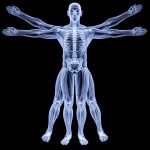 Want to earn continuing education credit for this article? Learn more.
Want to earn continuing education credit for this article? Learn more.
Weighing in as one of the diseases women fear most, breast cancer is estimated to affect one in every eight women. Despite breast cancer being the second-leading cause of cancer deaths in American women, its early diagnosis and treatment has drastically improved this illness’ survival rate. When included in a person’s recovery from this illness, massage therapy has the capacity to improve the physical and emotional health of a breast cancer survivor.
With compassion, specific training and attention to documentation and legal issues, bodyworkers have the tools to help clients mend the parts of their life fragmented by traditional breast cancer treatment. As one of the leading treatments for breast cancer, the complete or partial surgical removal of breast tissue can make a significant impact on a person’s life. In addition to the side effects from other therapies one may have received, the loss of one or both breasts may congest blood, lymph and energy circulation in the chest and upper extremities. Just as important to an individual’s well-being, breast disfigurement or amputation can take a drastic psychological toll on survivors.
Types of Breast Cancer Surgeries
Since there are so many variations of type and severity of breast cancer, the treatment approach for this illness is highly individual. Involving a great deal of deliberation between patient and doctor, most women will have surgery and an additional therapy such as radiation, chemotherapy or hormone therapy. In general, breast removal surgeries fall into one of the following four categories:
- Lumpectomy – A surgical excision of only the palpable tumor mass.
- Partial Mastectomy – Removes less than the whole breast, such as a quarter of the breast where the tumor resides.
- Modified Radical Mastectomy – Removes all breast tissue, including the skin, nipple, areola and most of the axillary lymph nodes on the same side while leaving the pectoral muscles intact. As the most common surgery for early stage breast cancer, this is also called a total mastectomy with axillary dissection.
- Halsted Radical Mastectomy – Removes the breast, skin, both pectoral muscles and all axillary lymph nodes on the same side.
Massage Therapy Following Breast Surgery
Because of the unknown mechanism for spreading cancerous cells, most massage therapy schools teach that cancer is a contraindication for massage. However, modern research has repeatedly demonstrated that carefully executed bodywork offers measurable benefits to people currently living with or who have survived a bout of cancer. Regardless of the growing acceptance of massage therapy for cancer-related issues, approaching a client with a recent or distant history of breast cancer always mandates the practitioner proceed with caution.
- Permission – First and foremost, obtain the permission of your client’s physician prior to administering massage.
- Consent – Make certain you have your client’s written informed consent before proceeding with massage therapy.
- SOAP notes – Adhere to this conventional form of record keeping, which includes taking subjective, objective and assessment plan notes.
- Training – Only proceed with bodywork if you have successfully completed training specific to oncology massage.
Following breast cancer surgery, common physical problems may include local pain, swelling and restricted range of motion. If the pectoral muscles have remained intact, the physical effects are likely the result of impaired circulation from removed lymph nodes, scar tissue and adhesions from surgery. Including techniques such as therapeutic touch for acute surgical recovery, lymphatic drainage massage for lymphedema, scapular mobilization for a stiff shoulder, myofascial spreading for tight pectorals and cross-fiber friction to dissolve scar tissue, a therapist trained in oncology massage has many tools to help clients recover from breast cancer surgery.
Women who have experienced the trauma of breast cancer surgery can benefit emotionally from touch-centered therapy. When applied with healing intent and compassion, a massage therapist’s touch can function as a bridge to help clients become reconnected to their body. For many breast cancer surgery recipients, the physical contact of massage eases the feeling of being a stranger in their own body, a transition that can help them find comfort in their new physical form.
Since a lumpectomy or mastectomy is indicated in a majority of cases, many breast cancer survivors must contend with the consequences of their surgery. Although not outfitted with a medical doctor degree, massage therapists can help clients with a history of breast cancer return to health. By seeking the proper training, taking acceptable notes, getting physician permission and obtaining client written consent, massage therapists can facilitate their clients’ physical and emotional recovery from breast cancer surgery.
Earn continuing education credit for this article contained in our Cancer & Massage series. Click here to enroll.
More Information:
Breast Cancer: Description and Massage Precautions















